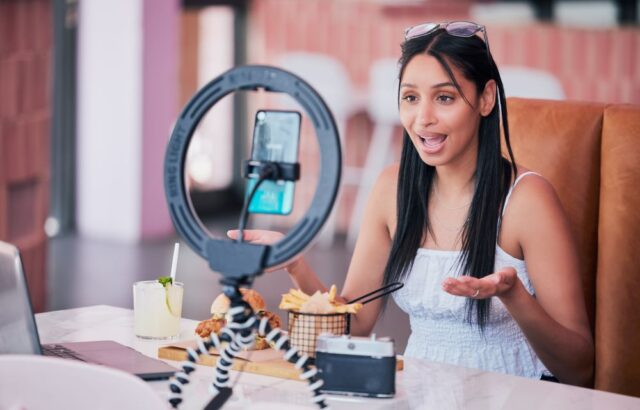Too many influencer marketing programs rely on metrics that impress but rarely inform. Likes, views, and follower counts offer a surface-level sense of momentum, but they rarely capture what matters to your business. If you’re leading marketing strategy, you’ve likely outgrown those vanity signals. What’s needed is a deeper set of measurements, ones that map directly to business growth, brand perception, and customer action. Influencer marketing has matured, and the metrics used to evaluate it must evolve as well.
Start with objectives, not platforms
You can’t measure success without a clear sense of what success means. Before any influencer is briefed or content is created, campaigns must align with business priorities. That could be expanding into a new vertical, increasing qualified leads, or improving retention among a particular customer segment. Setting goals upfront allows for smarter KPI selection and reduces the risk of defaulting to engagement rates as a crutch. B2B campaigns that start with commercial intent often see better alignment between influencer performance and business results.
Tip: When building a campaign brief, include no more than three measurable objectives. This improves clarity for both your team and the influencer.
Replace vanity metrics with business indicators
High engagement doesn’t always lead to high impact. You should be looking at actions, not applause. Metrics like conversion rate, cost per acquisition, and customer lifetime value allow you to assess how influencer touchpoints are driving tangible outcomes. Shopify’s enterprise team points out that tracking unique discount codes or affiliate links can be an effective proxy for bottom-funnel performance. For top-of-funnel goals, metrics like website traffic driven from influencer content or branded search volume increases offer more meaningful insight than raw impressions.
Metrics to prioritize over vanity indicators:
- Conversion rate from influencer-driven traffic
- Cost per acquisition (CPA) tied to influencer content
- Increase in branded search volume during campaign windows
- Influencer-attributed revenue or purchases
- Lifetime value of customers acquired through influencer channels
Did you know? Some influencer campaigns drive higher ROI than paid social when discount codes are personalized and time-bound.
Dig into audience alignment, not just reach
Reach alone means little if you’re not reaching the right people. One of the smarter moves you can make is evaluating whether an influencer’s audience overlaps with your ideal customer profile. Some of the most overlooked KPIs in influencer reporting include demographic match, audience sentiment, and engagement authenticity. You’re more likely to see ROI when campaigns are built around strategic audience alignment rather than size or popularity.
Track sentiment and share of voice to monitor brand lift
Influencer marketing can shift how people talk about your brand. That shift isn’t always immediate, and it won’t show up in a like count. Brand sentiment, measured through social listening tools or surveys, can help you understand if perception is improving. If the goal is increased authority or relevance in a specific category, you should be looking at share of voice metrics relative to competitors. Consistent gains in brand favorability or volume of positive mentions are often a better indicator of influence than short-term sales spikes.
Customize KPIs for each campaign and client
There’s no universal dashboard that works for every influencer activation. Success looks different depending on the category, channel, and campaign intent. PR professionals have been refining this approach for years, using custom KPIs tied to each client’s business model and communication objectives. You can borrow this model by building measurement frameworks that vary by campaign tier, content type, and platform. While TikTok might drive faster viral reach, LinkedIn delivers more reliable B2B lead quality, so KPIs should differ accordingly.
Examples of tailored KPIs by campaign type:
- Brand awareness: Impressions, reach, share of voice, new social followers
- Consideration: Click-through rate, branded search lift, dwell time on landing pages
- Conversion: Promo code redemptions, form fills, revenue per post
- Loyalty: Repeat purchases, return visits from influencer links, NPS from acquired users
Tip: Classify influencers into tiers – macro, micro, and niche – and assign different success metrics to each tier based on your campaign goals.
Measure long-term influence, not one-time impact
The most valuable influencers build ongoing credibility for your brand, not just one-time traffic bumps. You should be measuring retention, not just reach. 2025 will bring greater scrutiny on creator consistency and campaign continuity. Instead of evaluating performance by post, consider metrics like returning visitors from influencer links or repeat purchases tied to creator-driven product recommendations. These reveal how deeply an influencer is integrated into your customer’s decision-making process.
Did you know? Long-term creator partnerships yield 30 to 40 percent higher average engagement rates compared to one-off campaigns.
When you replace superficial engagement metrics with business-aligned KPIs, you create a foundation for clearer decision-making and better campaign performance. You’ll be able to justify budgets with greater precision and plan future influencer partnerships with more confidence. You’ll also be able to explain to internal stakeholders not just what worked, but why. This shift is structural, and it positions influencer marketing as a true performance channel rather than a branding experiment.
Sources
Considerations for Measuring Your B2B Influencer Marketing Effectiveness and ROI
How to Measure Influencer Campaigns Effectively in 2025
How To Measure The Impact Of PR Efforts: 17 Essential KPIs
Influencer Marketing Will Be Anything but Stagnant in 2025
Marketers on why it’s ‘time for influencer measurement to grow up’
Measuring PR and Comms Success With Customized Client-Aligned KPIs
The ROI of Influencer Marketing: How to Measure & Get The Most Out of Your Influencer Efforts





